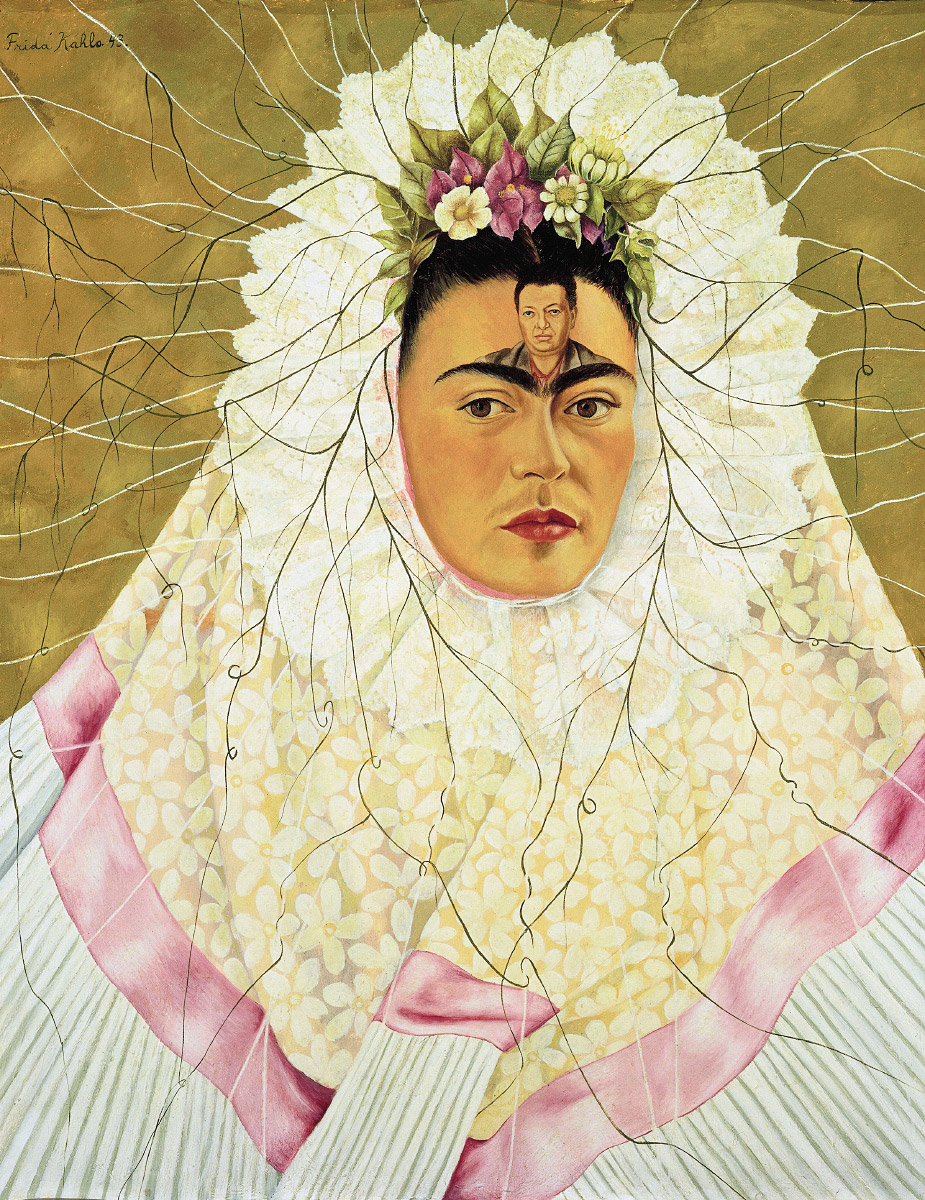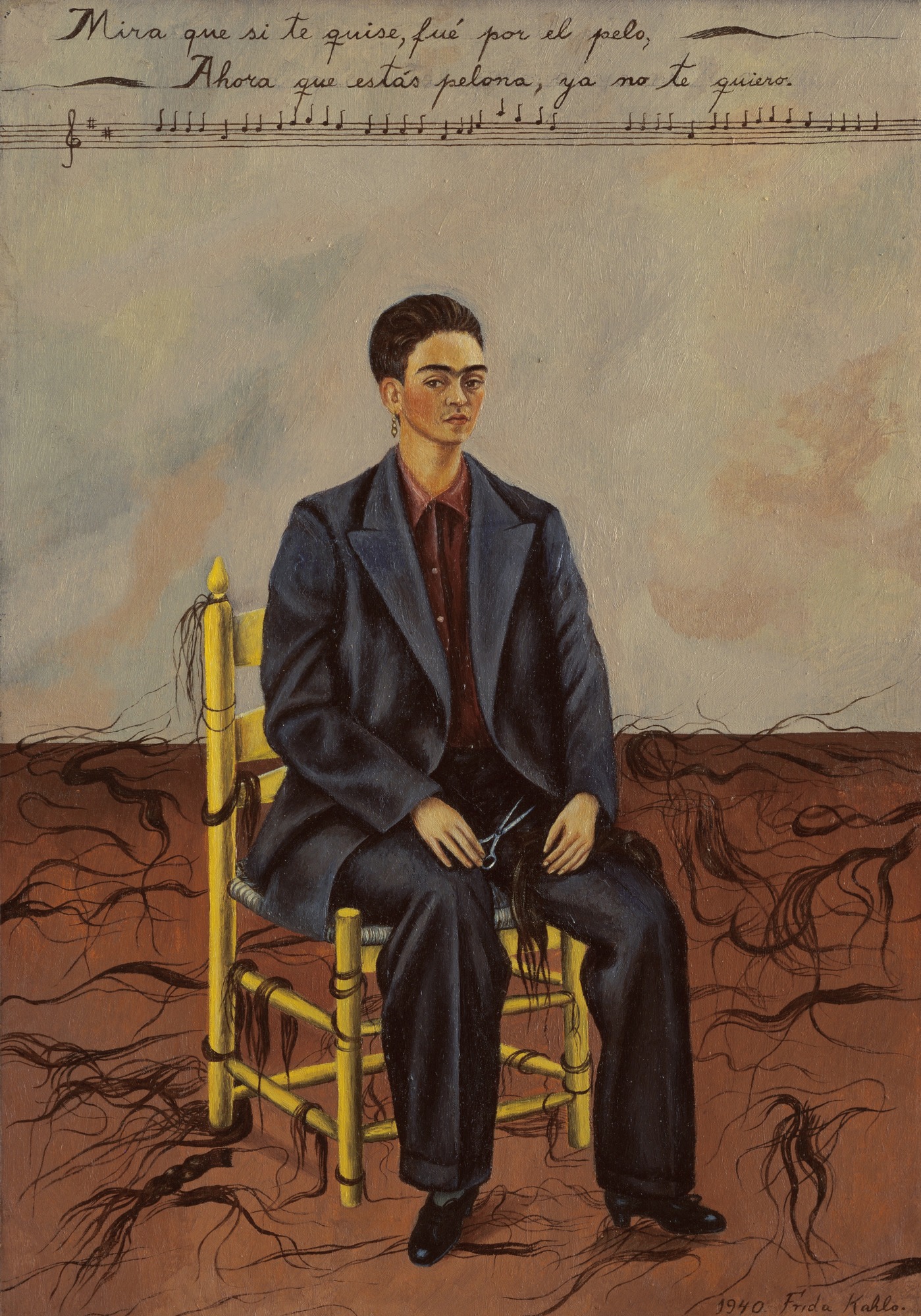FRIDA KHALO
BREAKING THE BEAUTY STANDARD AND GENDER ROLES FOR WOMEN EVERYWHERE
Frida Kahlo's art is known for its exploration of gender identity and sexuality, particularly in her self-portraits. Kahlo's works often challenge traditional gender roles and stereotypes, as well as portray her own experiences with physical and emotional pain.
One example of Kahlo's expression of gender can be seen in her 1940 painting "Two Fridas," in which she depicts two versions of herself sitting side by side, both dressed in traditional Mexican clothing. One Frida wears a white European-style dress and holds a small portrait of her husband, while the other Frida wears a traditional Tehuana dress and holds a pair of surgical forceps, symbolizing her emotional and physical pain. This painting has been interpreted as a representation of Kahlo's struggle to reconcile her Mexican and European identities, as well as her exploration of her own gender identity and sexuality.
Kahlo also frequently depicted herself with short hair or masculine clothing, such as in her self-portrait "Self-Portrait with Cropped Hair," in which she wears a man's suit and has her hair cut short. This painting has been interpreted as a statement on Kahlo's rejection of traditional gender roles and expectations.
One of the key ways in which genderqueer art has affected history is by contributing to the broader struggle for LGBTQ+ rights. Genderqueer artists have used their work to raise awareness of issues affecting the LGBTQ+ community and to advocate for greater acceptance and equality. Through their art, they have challenged societal norms and provided a platform for marginalized individuals to express themselves and be seen and heard.
Overall, Kahlo's art can be seen as a powerful expression of gender queerness, as she challenged traditional gender norms and stereotypes and explored her own complex identity through her paintings.




